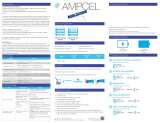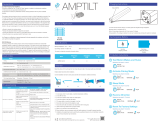
4
3 Operation using the OPX-2A ................................................................................................................................123
3-1 Overview of the OPX-2A ................................................................................................................................................................123
3-2 Names and functions of parts ........................................................................................................................................................124
3-3 How to read the display ...................................................................................................................................................................124
3-4 OPX-2A error display .......................................................................................................................................................................125
3-5 Screen transitions ...............................................................................................................................................................................126
3-6 Monitor mode ......................................................................................................................................................................................130
3-7 Data mode ............................................................................................................................................................................................. 131
3-8 Parameter mode..................................................................................................................................................................................134
3-9 Test mode ..............................................................................................................................................................................................141
3-10 Copy mode ............................................................................................................................................................................................ 143
4 Inspection and maintenance .................................................................................................................................144
4-1 Inspection .............................................................................................................................................................................................. 144
4-2 Warranty ................................................................................................................................................................................................. 144
4-3 Disposal ..................................................................................................................................................................................................144
5 Alarms and warnings ...............................................................................................................................................145
5-1 Alarms .....................................................................................................................................................................................................145
5-2 Warning ..................................................................................................................................................................................................152
5-3 Communication errors ......................................................................................................................................................................153
6 Troubleshooting and remedial actions ................................................................................................................154
5 Operation type and setting
1 Guidance ....................................................................................................................................................................156
2 Adjustment and setting ..........................................................................................................................................160
2-1 Resolution ..............................................................................................................................................................................................160
2-2 Operating current ...............................................................................................................................................................................161
2-3 Standstill current .................................................................................................................................................................................161
2-4 Acceleration/deceleration rate and acceleration/deceleration time ...............................................................................162
2-5 Smooth drive ........................................................................................................................................................................................162
2-6 Speed lter ............................................................................................................................................................................................163
2-7 Moving average lter ........................................................................................................................................................................164
2-8 Speed error gain .................................................................................................................................................................................. 164
2-9 Control mode .......................................................................................................................................................................................165
2-10 Position loop gain, speed loop gain, speed loop integral time constant ....................................................................... 165
2-11 Absolute-position backup system ................................................................................................................................................ 166
3 Operation type and function list ...........................................................................................................................167
4 Positioning operation ..............................................................................................................................................168
4-1 Operation data .....................................................................................................................................................................................168
4-2 Starting method of positioning operation ................................................................................................................................ 170
4-3 Operation function.............................................................................................................................................................................175
4-4 Push-motion operation ....................................................................................................................................................................179
5 Return-to-home operation .....................................................................................................................................182
5-1 Operation sequence ..........................................................................................................................................................................185
5-2 Position preset .....................................................................................................................................................................................189
6 Continuous operation .............................................................................................................................................190
6-1 Starting method of continuous operation ................................................................................................................................191
6-2 Variable speed operation ................................................................................................................................................................. 193
7 Other operation ........................................................................................................................................................195
7-1 JOG operation ......................................................................................................................................................................................195
7-2 Test operation ......................................................................................................................................................................................196























